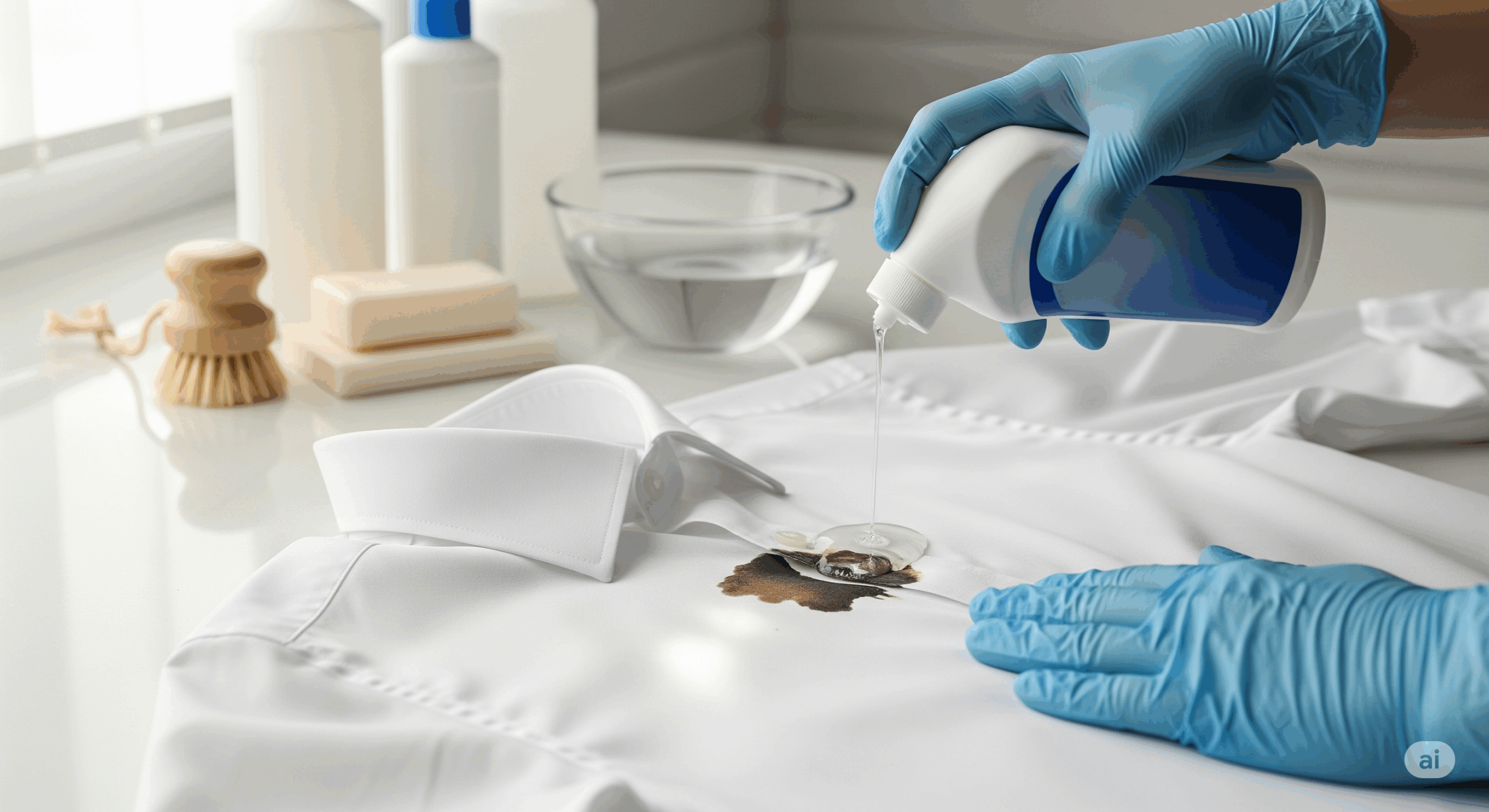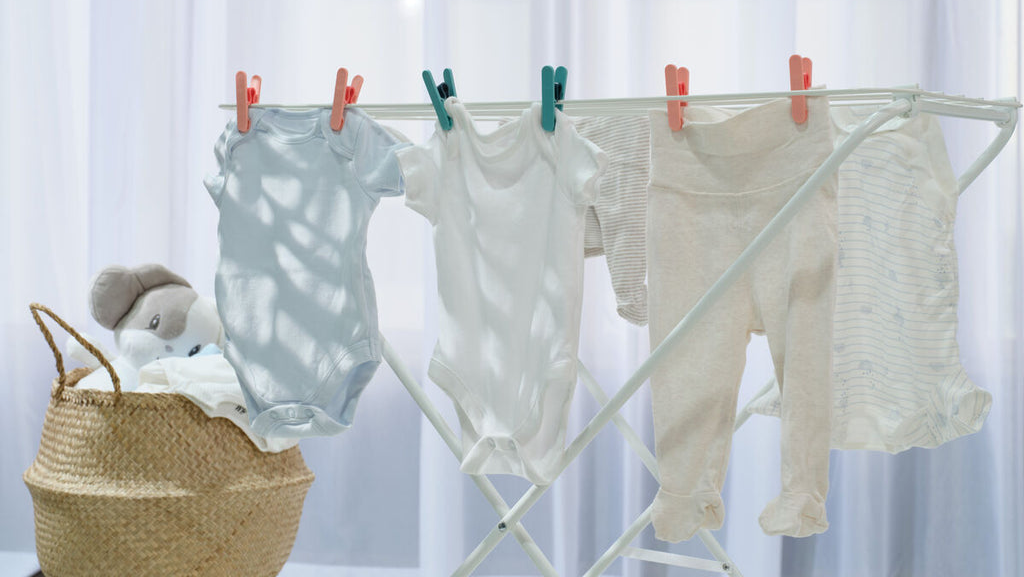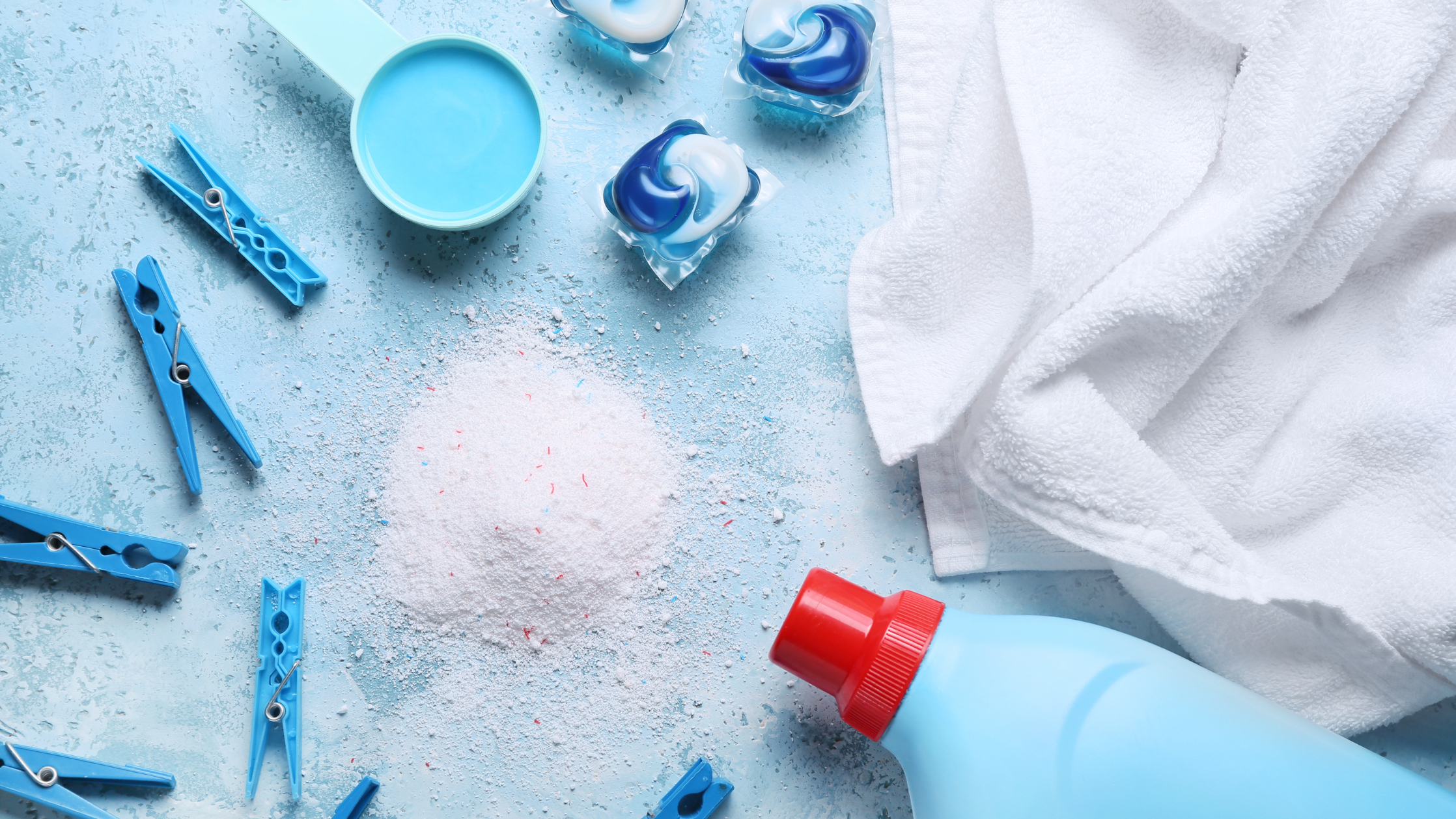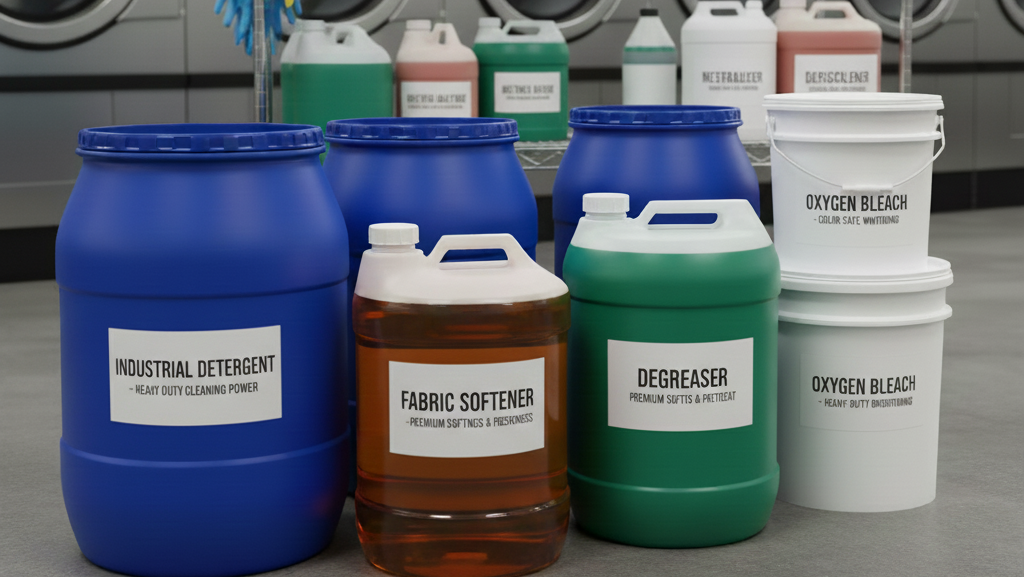In a professional laundry process, there are certain stains that cannot be completely removed by regular washing alone. This is why the spot cleaning method was introduced to effectively treat individual stains before the fabric undergoes the full washing cycle.
1. What is the spot cleaning method?
Spot cleaning is an advanced laundry technique that focuses on removing stains from a specific area of fabric rather than washing or dry-cleaning the entire item. This is a targeted cleaning method designed to treat only the soiled or stained area without affecting the surrounding fabric, before the garment or linen goes through the full washing cycle. By addressing stubborn stains at the very beginning, this step prevents them from spreading or transferring onto other fabrics during bulk washing.
The spot cleaning method uses carefully selected solutions or specialized chemicals based on two factors: the type of stain and the fabric material. This ensures thorough stain removal and preservation of the fabric’s durability, color, and fiber structure.
This technique is particularly effective for stains that are difficult to clean through normal washing, such as:
-
Dried blood stains: require solutions that break down proteins without damaging the fibers.
-
Coffee and tea stains: contain tannins that easily leave marks, requiring specialized tannin removers.
-
Grease and cosmetic stains: adhere tightly and require agents capable of emulsifying fats.
-
Ink stains: need solvents that dissolve ink without spreading it to adjacent areas.
-
Long-standing yellow stains: caused by sweat or oxidation, requiring mild yet fabric-safe bleaching agents.
Thanks to this spot cleaning step, finished products are not only surface-clean but also meet the highest standards of hygiene and aesthetics.
2. Basic steps for spot cleaning method
The proper stain removal process in professional laundry not only requires knowledge of chemicals and fabrics, but also requires skillful handling to both thoroughly remove stains and protect the fabric fibers. At Green Laundry, this process usually includes the following steps:
2.1 Step 1: Identify the type of stain and fabric material
Not all stains are the same, and each fabric type reacts differently to chemicals. Upon receiving the items, staff carefully examine the stains (fresh or old, wet or dry) and classify them according to fabric type (cotton, polyester, silk, linen, etc.). Accurate identification ensures the selection of the right method and cleaning solution, preventing discoloration or damage to the fabric surface.
2.2 Step 2: Select the appropriate spot cleaning solution
Based on the classification results, staff will choose the suitable chemical:
-
Oil-based stains (grease, cosmetics, butter, sauces): treated with degreasing solutions capable of emulsifying fats.
-
Protein-based stains (blood, milk, eggs): treated with specialized protein enzymes that break down protein structures without damaging fibers.
-
Tannin-based stains (coffee, tea, red wine): treated with specialized tannin removers that eliminate pigments adhering to fabric fibers.
2.3 Step 3: Direct stain treatment
The stain is lightly moistened to help the solution absorb evenly. Staff then apply the cleaning agent directly to the stained area using a soft brush, cotton swab, or clean cloth, and proceed to treat the stain. For delicate or easily damaged fabrics, the technician works from the reverse side to minimize any impact on the visible surface.
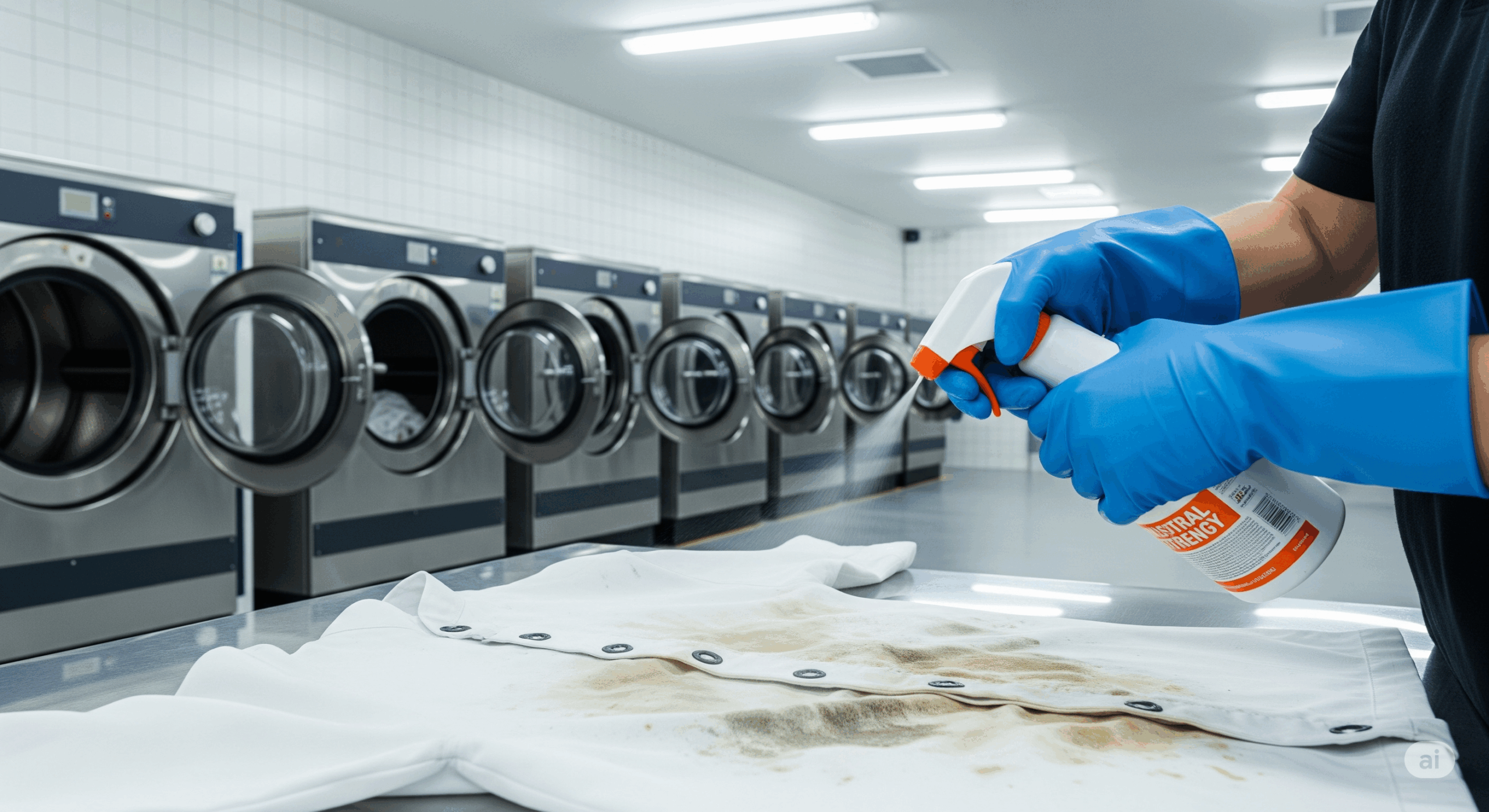
2.4 Step 4: General washing
After stains have been treated, the entire item continues through the subsequent laundry process. This washing step completely removes any remaining chemicals and ensures the whole product is evenly cleaned. When performed correctly, spot cleaning not only eliminates stubborn stains but also extends the fabric’s lifespan, preserving its original softness and color.
3. Advantages of the spot cleaning method
3.1 Superior cleaning effectiveness
Spot cleaning thoroughly addresses difficult, stubborn stains that conventional washing alone may not remove. By treating stains directly, specialized chemicals work at maximum efficiency, restoring the fabric surface to a clean, like-new condition.
3.2 Maximum fabric protection
Instead of applying strong chemicals to the entire item, spot cleaning focuses only on the affected area, minimizing the risk of discoloration, shrinkage, or fiber damage in other parts of the fabric. This is especially important for delicate, premium textiles or thin, fragile fabrics.
3.3 Time and cost savings
By treating stains quickly at the source, this method eliminates the need for repeated washing, thereby shortening turnaround time. Customers benefit from reduced operating costs while ensuring a continuous supply of ready-to-use textiles.
4. Key considerations when applying spot cleaning method
4.1 Test the solution on a small, hidden area
Before applying any chemical or spot cleaning solution, test it on a discreet part of the fabric, such as an inner seam, to observe its reaction. This helps prevent unintended discoloration, bleeding, or fiber damage.
4.2 Avoid high heat on protein-based stains
Stains from blood, milk, or eggs are protein-based. When exposed to high temperatures, they “set” into the fibers, making them more difficult to remove. These stains should be treated first with cold water or specialized solutions before proceeding to washing.
4.3 Only skilled and experienced staff should perform this method
Spot cleaning requires meticulous attention and professional knowledge, as each stain type and fabric material requires a specific treatment. Incorrect handling may cause stains to spread, penetrate deeper, or damage the fibers. Therefore, this task must be carried out by highly skilled and experienced laundry technicians. They not only understand the characteristics of each fabric but also know how to select the right solution, dosage, and technique to ensure thorough stain removal while preserving fabric quality, durability, and appearance.

When combined with the standard laundry process, spot cleaning ensures garments and textiles are both spotless and of the highest quality. At Giat Ui Xanh, spot cleaning is always performed by highly trained technicians with years of industry experience. After the spot cleaning step, all textiles are processed through the standard industrial laundry cycle to guarantee cleanliness and protection. If you would like to learn more about our complete laundry process, please click here for details.
Green Laundry – the leading company in providing quality and professional laundry solutions in Vietnam
Email: greenlaundry@giatuixanh.com
Phone: 028 36 222 180
Fanpage: Giặt Ủi Xanh – Chuyên Giặt Ủi Công Nghiệp
Address: Lot A57/II-Lot 58/II, Road No. 2D, Vinh Loc Industrial Park, Binh Tan Ward, Ho Chi Minh City.

